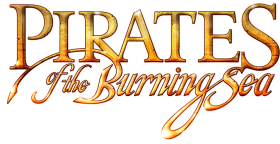ZAM Dives Into the F2P Pirates of the Burning Sea
Now that this pirate MMO is free-to-play, we decided to take another look at the game. Follow along to see if you should start a career on the high seas!

In January 2008, Flying Lab Software released Pirates of the Burning Sea after more than two years of beta testing. Originally the game came with a $14.99 per month subscription fee and boasted almost a dozen servers for players across the world to participate in naval and boarding action. Almost three years later, the game has adopted the free-to-play format. Players can now play the game with a free account or gain access to additional perks by paying the old subscription price as a Captain's Club member or purchasing extra content along the way. To see how this new format has affected gameplay, I decided to take a dive into the world of Pirates of the Burning Sea.
The game starts with several choices that will dramatically affect how you play. First you choose an allegiance: Spain, France, Britain or Pirate. The three countries get to pick from three different classes: Naval Officer, which specializes in strong but slow warships; Privateer, which plays like a pirate loyal to your country and specializes in boarding the enemy; or Freetrader, which specializes in fast ships and the economy. A Pirate can be either a Cutthroat who specializes in PvP and stealing ships or a Buccaneer who combines mercantile strength with the ability to scavenge, if not take, enemy ships.
Currently the game is down to two full-time servers, both of which have a slight majority of British and Pirate players. While the limited servers ensure a high number of other people playing at the same time, it also has led to queue times, which is usually under a 10-minute wait. I created a Spanish Privateer since both the Pirates and British were heavily populated and started my adventure!

The gameplay itself consists of two types of action screens: boarding and naval combat. Boarding is similar to many mainstream MMOs. A character has different action abilities, including ranged and melee attacks, as well as an energy meter to use special attacks. And, while the primary classes above can be further differentiated into three combat categories (Florentine, Dirty Fighting and Fencing), all with their own talent trees, the boarding combat comes off as lackluster at best. Targeting is difficult, consisting of either tabbing to select your enemies or attempting to click them on the go.
A typical boarding encounter consists of an enemy captain against the player, with several crew members thrown into the mix. Players can call waves of reinforcements, or save the call to resurrect themselves if killed. The first side to lose all their waves and their captain loses. But as said, the action is clunky. Boarding often turns into Area of Effect combat and stuns to defeat the other team quickly and, while winning is always satisfying, the encounters are all practically identical. After a few battles I would have been done with boarding completely if not for the chance at extra loot through the encounters.

Naval combat is an entirely different beast. It is much more focused on strategy and is why the game could be considered to have a high learning curve. In order to successfully board an enemy, their ship must be slowed down to grapple. However, if there are several ships attacking, slowing down and boarding a ship leaves the player open to other attacks. At these times, it may be preferable to pursue a full-out attack and attempt to get the enemy to abandon ship or simply sink. The strategy comes into play with all sorts of variables, from the wind direction to the multitude of shot types; such as bar shot to take out sails, scatter shot to take out crew and heavy shot to wreck the hull.
While the basic concept is easy to understand, the strategies take a lot of practice to execute properly. New players will often find their boats sinking, followed by them showing up at the nearest port without any of their cargo. Just as I was getting into the game and had equipped my ship with upgraded cannons and sails, I lost an encounter and ended up without anything. Luckily, if your ship ends up being completely destroyed you can always get the most basic kind for free. This led to a “try, try again” strategy in my first several hours, until I had a decent grasp of how to take down ships and what kind of targets to tackle.
To help ease the high learning curve, Flying Lab has introduced a fair amount of practice and introductory missions. These tutorials follow not only the main story, but also include elements such as class abilities, like claiming a derelict ship or setting up a lumber camp, as an introduction to the economy.
Continued on Page 2.




